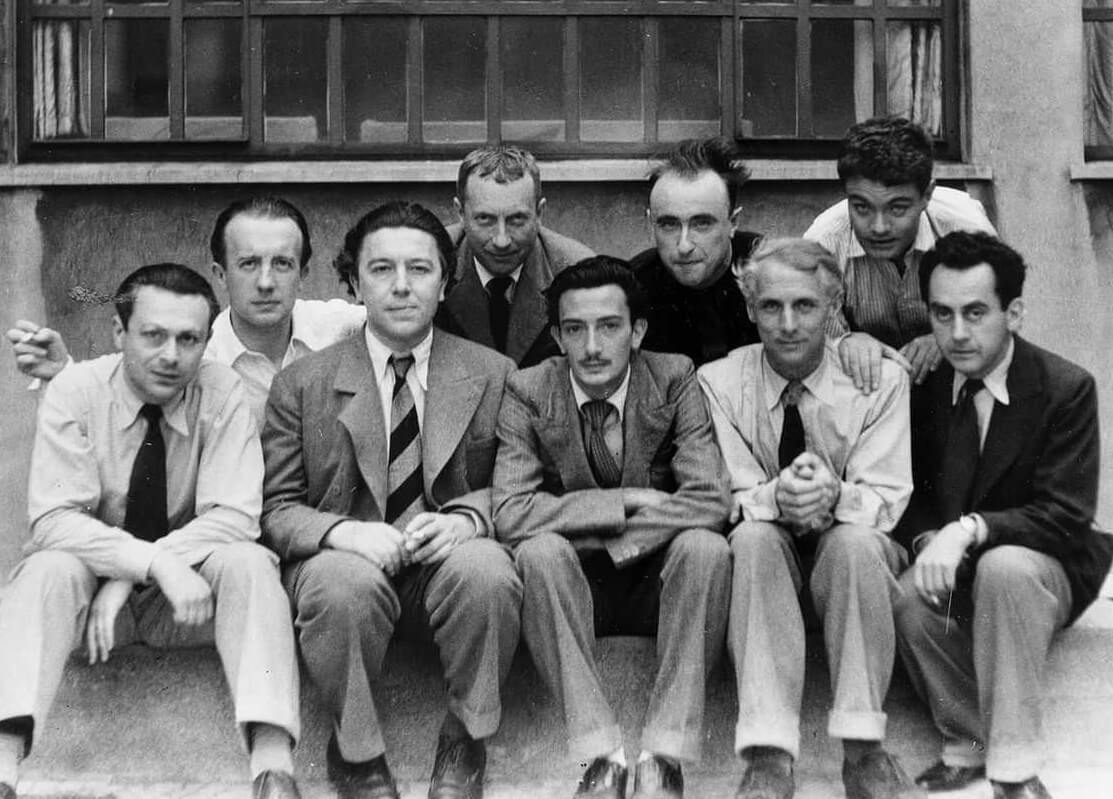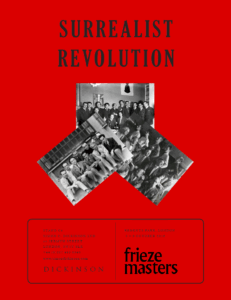Let us take you back to 1920s Paris and the origins of the Surrealist movement. Pioneered by influential writers André Breton and Paul Éluard, the movement sought to revolutionise human experience, rejecting rational perceptions of life in favour of the unconscious and dreams.
These two pictures by Yves Tanguy and André Masson reflect Breton’s first Surrealist Manifesto of 1924. Breton called on artists to explore the unconscious by harnessing ‘pure psychic automatism’. Automatic drawing involves applying pen to paper as rapidly as possible without intervening consciously to guide the hand and this leads to boundless invention as seen in these dynamic, anthropomorphic forms.
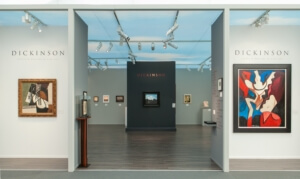

Dickinson’s stand at Frieze Masters 2016
Cover of Dickinson’s presentation The Surrealist Revolution, on the occasion of Frieze Masters 2016
Surrealism would take in some of the most influential artists of the 20th Century including Magritte, Tanguy, Ernst, Picasso, Picabia and Dalí. Their work was brought together in Dickinson’s curated presentation The Surrealist Revolution at Frieze Masters in 2016, accompanied by a brochure recreating Breton’s influential bulletin La Révolution surréaliste.
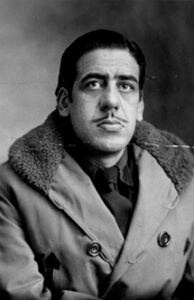

Oscar Dominguez (1906 – 1957)
The Spanish artist Oscar Domínguez became one of the main figures of the Surrealist movement after meeting André Breton and Paul Éluard in 1933. Alongside Max Ernst he popularised the technique of Decalcomania as a Surrealist automatic technique in 1936, a process whereby paint is squeezed between two surfaces to create a mirror image.
Oscar Dominguez, Leda y el cisne, 1952, oil and ink on canvas
These two paintings date to the 1950s, the final decade of Domínguez’s life before his untimely death by suicide in 1957. Figura con arquitecturas is gem-like in scale and dominated by bold outline and colour blocks, bringing together body and building in inventive Surrealist juxtaposition. Also executed with bold outline, Leda y el cisne (Leda and the swan) meanwhile reflects the Surrealist interest in classical myth, here the legend of the seduction of Leda by Zeus in the form of a swan. The two images complement each other very well and it is no surprise that they come to us on consignment as a pair from a distinguished private American collection.
Oscar Dominguez, Figura con arquitecturas, 1956, oil on canvas
To end on a light note (the Surrealists were humourists after all!), Magritte is known for his men in bowler hats and moonlit street scenes but did you know he also painted dogs? Here is Jackie, a Pomeranian-spitz who used to travel alongside Magritte in plane cabins in her own seat. The temple in the background is a humorous reference to Magritte’s Belgian Surrealist counterpart Paul Delvaux, known for his images of female subjects immersed in classical scenes. Let us hope that Delvaux found the canine twist amusing!
René Magritte, Le Civilisateur, June 1944, oil on canvas
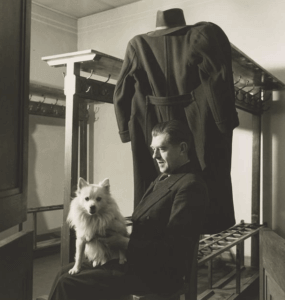

Magritte and his dog Jackie, Brussels, 1944. Photo by Lee Miller, © Lee Miller Archives


